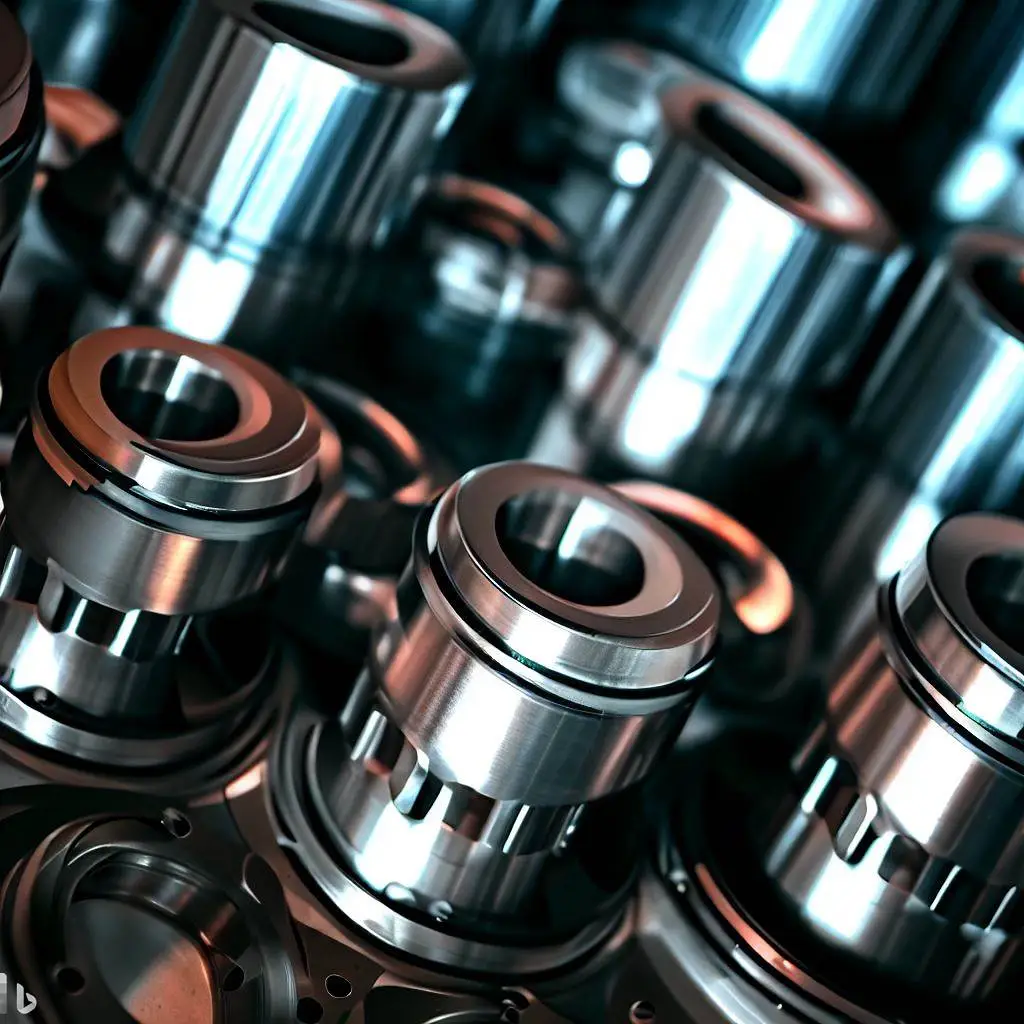Metal Injection Pistons: What They Are and How They Work
Metal injection pistons are devices that are used in the process of injecting liquid metal into molds. They are expected to provide sealing and thermal resistance while not damaging the bucket in which they operate. Hard copper alloys are used to combine all these properties. In this article, we will discuss what metal injection pistons are, how they work, what are their benefits, what materials are used to make them, how they are manufactured, and what are their applications.
What are metal injection pistons?
Metal injection pistons are cylindrical components that move inside a bucket or a cylinder to inject liquid metal into molds. They are part of a metal injection molding (MIM) system, which is a technique that combines the advantages of powder metallurgy and plastic injection molding to produce complex and precise metal parts. Metal injection pistons have a plunger-like shape and a tapered tip that fits into the nozzle of the bucket. They also have grooves or channels on their surface that allow the liquid metal to flow through them.
How do it work?
Metal injection pistons work by applying pressure to the liquid metal inside the bucket and forcing it through the nozzle into the mold cavity. A hydraulic or pneumatic system controls the piston’s reciprocating motion. The viscosity and temperature of the liquid metal, as well as the size and shape of the mold cavity, determine the piston speed and pressure. When the piston is retracted, it acts as a valve that prevents the liquid metal from flowing back into the bucket.
What are the benefits of using metal injection pistons?
Metal injection pistons offer several benefits for the MIM process, such as:
- Improving the quality and accuracy of the molded parts by ensuring a uniform and consistent injection of the liquid metal.
- Reducing the waste and cost of the material by minimizing the amount of liquid metal that remains in the bucket after each injection cycle.
- Increasing the productivity and efficiency of the MIM process by allowing faster and more frequent injections.
- Enhancing the safety and reliability of the MIM system by preventing leaks, spills, or explosions of the liquid metal.
What materials are used to make it?
Metal injection pistons are made of hard copper alloys that have high thermal conductivity, wear resistance, corrosion resistance, and mechanical strength. These alloys include beryllium copper, chromium copper, zirconium copper, and nickel silicon chromium copper. These alloys can withstand high temperatures and pressures without deforming or cracking. They can also resist erosion and abrasion caused by the friction and flow of the liquid metal. Moreover, they can prevent chemical reactions or galvanic corrosion between the piston and the bucket or the nozzle.
How are metal injection pistons manufactured?
Metal injection pistons are manufactured by using various machining processes, such as turning, milling, drilling, grinding, polishing, etc. To manufacture the piston, various machining processes are used, such as cutting, shaping, and finishing. These processes are done on a solid block or a rod of copper alloy. High precision and accuracy are required to ensure that the piston has a smooth surface, a proper fit, and a correct alignment with the bucket and the nozzle. Grooves or channels are also created on the piston surface to allow the liquid metal to flow through them.
Applications
Metal injection pistons are widely used in various industries that require complex and precise metal parts, such as:
- Automotive: It can be used to produce engine components, fuel injectors, sensors, valves, gears, etc.
- Aerospace: It can be used to produce turbine blades, nozzles, bearings, fasteners, etc.
- Medical: It can be used to produce implants, surgical instruments, dental devices, etc.
- Electronics: It can be used to produce connectors, switches, relays, etc.
Conclusion
Metal injection pistons inject liquid metal into molds to make complex metal parts. Without damaging the bucket, they seal and resist heat. Hard copper alloys that have many properties are used to make them. They apply pressure to the liquid metal and force it through the nozzle. Quality, accuracy, efficiency, and safety of the MIM process are improved by them. Various industries, such as automotive, aerospace, medical, and electronics, use them.








